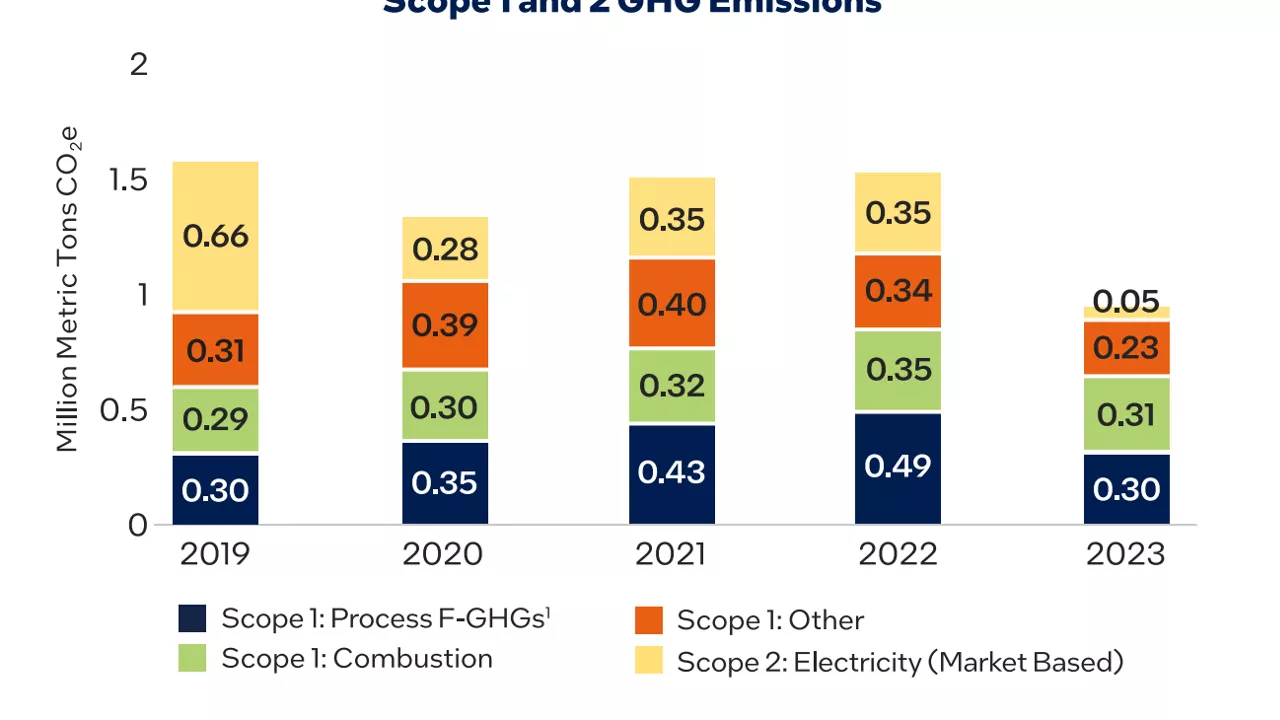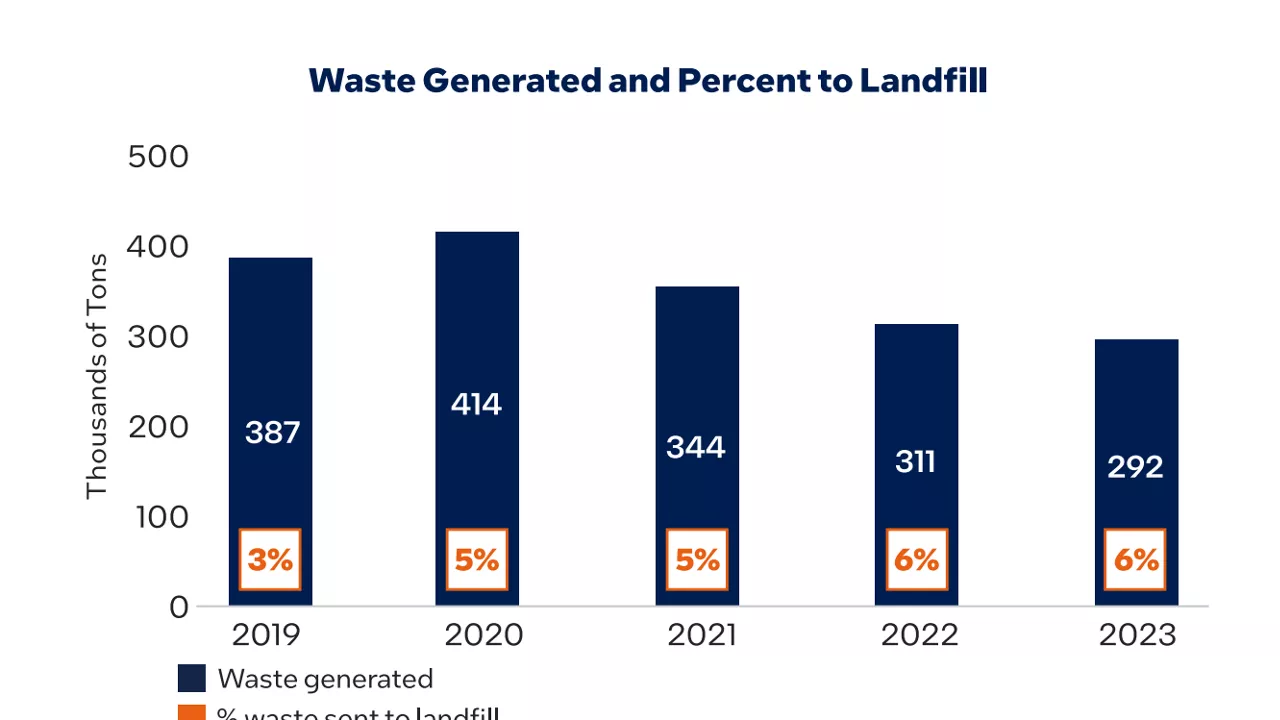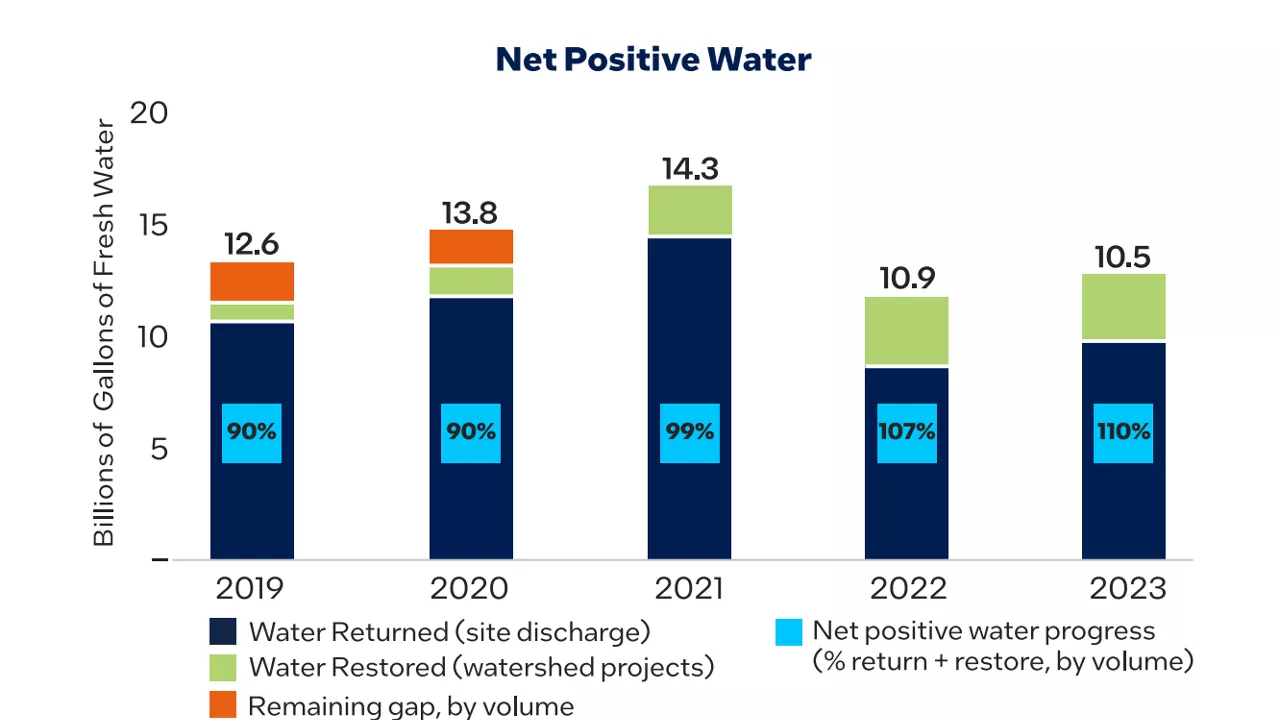Intel and the Environment
We aspire to be a global leader in sustainability and enable partners and customers to reduce their environmental impact through our actions. Our environmental projects and company-wide initiatives are driving reductions in greenhouse gas emissions, energy use, water use, and waste generation around the world.
Learn more about our operational sustainability goals below.
Our Commitment to Sustainability
Through conservation, strong collaborations, and application of technology, we have long worked to reduce the environmental impact of our operations. Our operational sustainability goals help answer the call for even more urgent action to further addressing climate change, responsibly managing our water use, identifying innovative ways to achieve zero waste to landfill, and implementing circular economy strategies for our manufacturing waste streams.
We recognize that solving the world's environmental challenges requires broad, collective action, and we collaborate with governments, other companies, our suppliers, and nonprofits to help others reduce their own environmental impacts.
Our Operational Sustainability Goals
Climate
Drive a 10% reduction in our absolute Scope 1 and 2 greenhouse gas (GHG) emissions from 2020 to 2030, and reach net-zero Scope 1 and 2 GHG emissions across our global operations by 2040.
Energy
Achieve 100% renewable electricity use across our global operations and conserve 4 billion kWh of electricity by 2030.
Water
Achieve net positive water by 2030—by conserving 60 billion gallons of water and funding external water restoration projects.
Waste
Achieve zero waste to landfill and implement circular economy strategies for at least 60% of our manufacturing waste streams by 2030 in collaboration with our suppliers.
Our Commitment to Transparency
Every year, we report on our sustainability goals in our Corporate Responsibility Report, which details progress on our long-term focus to advance transparency, set ambitious goals and integrate corporate responsibility across all aspects of our business.
Read more about Intel's Corporate Responsibility Strategy and Goals, or visit Explore Intel for site-specific information on our environmental performance.
Our Stories
Learn more about our commitment to net-zero greenhouse gas emissions in our global operations
We know protecting our planet demands immediate action and fresh thinking. That’s why we have pledged to achieve net-zero greenhouse gas emissions in our global operations by 2040, to increase the energy efficiency and lower the carbon footprint of our products and platforms, and to work with customers and industry partners to create solutions that lower the greenhouse gas footprint of the entire technology ecosystem.
Learn more about our progress to reach 100% renewable electricity
Over the last five years, Intel's renewable electricity supply and purchases have totaled 37.9 billion kWh of renewable electricity. That's enough to power more than 3.5 million US households for one year. To learn more, read the white paper, “Intel’s Approach to Renewable Electricity.”
Explore water restoration projects
As part of our commitment to achieve net positive water, we are restoring water to support the communities we call home. To date, we have funded more than 40 water restoration projects, collectively restoring billions of gallons of water to local watersheds each year. These projects—whether agriculturally focused, conservation-centered, or targeted at in-stream flow protection—aim to address local water issues and support the well-being of our communities and the environment.
Arizona | California | New Mexico | Ohio | Oregon | Texas | India | Costa Rica | Ireland | Malaysia | Mexico | Vietnam
Read our 2023 Water Report Executive Summary | Read our 2023 Water Report
Read our 2022 Water Report Executive Summary | Read our 2022 Water Report
Read our 2021 Water Report Executive Summary | Read our 2021 Water Report
See how we’re using circular economics to reduce waste and cut costs
A circular economy model encourages businesses to re-envision traditional linear product strategies and manage environmental impact from ‘cradle to cradle’. When original equipment manufacturers and other Intel customers return components, also known as reverse logistics, Intel uses a circular economy strategy to maximize recovery value and while reducing the environmental impact.
Our Progress


